[ad_1]

REVIEW – Heading out into the great outdoors during the summer can be a lot of fun especially with a large group of friends. One important consideration though is making sure everyone can communicate when venturing to where cell signals are rare. The advent of inexpensive two-way radios has made staying in touch when on the move a lot easier and the technology continues to advance.
Midland recently released their most powerful two-way radio yet, the 50-watt MXT500 MicroMobile. While it doesn’t have as many features as other radios in its class and it’s not cheap at $399.99, the MXT500 is easy to use right out of the box and has a great build quality.
What is it?
The Midland MXT500 is a 50-watt mobile two-way radio with a powered USB-C port. The MXT500 is capable of transmitting on 15 General Mobile Radio Service (GMRS) channels and 8 repeater channels on both narrow and wide bands. GMRS is a licensed radio service that uses channels around 462 MHz and 467 MHz designed for short-distance two-way communication. At 50 watts the MXT500 is the most powerful GMRS radio allowed by law and requires an FCC GMRS license for use.

The Midland MXT500 two-way radio ships in a basic white cardboard box that details the features and specifications of the powerful GMRS radio.

What’s in the box?
- Midway MXT500 MicroMobile Two-Way Radio
- Microphone
- Microphone Mount
- Antenna Magnet Mount and cable
- Plate for Magnetic Mount
- 2.1dB Unity Gain Antenna
- Power Cord with inline fuse
- Mounting Bracket with hardware
- Owner’s Manual and Quickstart Guide

Hardware specs
- Channels: 15 GMRS Channels and 8 Repeater Channels
- Receive Frequency: UHF 462.550 – 462.550 MHz
- Transmit Frequency: UHF 462.550 – 467.725 MHz
- Channel Spacing (Narrow): 6.25 kHz (Analog)
- Antenna Impedance: 50 Ohms
- Weather Channels: 1 NOAA
- Privacy Codes:
- 38 CTCSS codes
- 104 DCS codes
- Power Source: 13.8 V DC
- USB: USB-C data and fast charging port
- IP Rating: IP66 – water-resistant against powerful jets
- Dimensions: 1.8 in x 5.5 in x 7 in (4.6 cm x 14 cm x 17.8 cm)
- Weight 3 lb. (1.4 kg)

Design and features
The design and build of the Midland MXT500 two-way radio is high quality and rugged which is what you’d expect from a company with a pedigree like Midland, established in 1959 and the first CB radio manufacturer in the United States.
The main body of the MXT500 is made of aluminum with the face and control knobs made of plastic.

The front of the radio has five rubberized buttons and two knobs for controlling the functions of the MXT500.

The smaller knob on the left of the unit controls power and volume. Pressing the knob in turns the Midland MXT500 two-way radio on, pressing in again and holding turns it off. Underneath the power knob is the input for the microphone cable.

The large knob on the right of the MXT500 is used to change channels and select options in the settings menu. As with the power knob, this knob is also clickable. To the left of the channel knob are two LEDs, the upper one is a blue power indicator and the lower one lights red during transmission and green during reception.

Underneath the channel knob is a powered USB-C fast-charging port that is also used to program the MXT500 from a PC using free software downloaded from the Midland website.

The front-facing buttons allow the user to access the settings menu (MENU), put the unit in channel scan mode (SCAN), monitor for activity on the currently active channel (MON), scan NOAA Weather Radio (WX), and lock the functions of the radio to prevent accidentally changing the settings (LOCK).

The aluminum top of the MXT500 has a grill for the internal speaker along with the serial number plate.

The back of the unit has the antenna port as well as long fins to keep it cool during extended use.

To the right of the cooling fins is a jack for connecting an intercom or headset using a mini XLR connector.

On the back corner of the Midland MXT500 two-way radio is the plug for connecting the included power cord.

The power cord is about 6.5 ft. long and has an inline fuse. One end of the cord mates with the plug on the unit and the other end is bare wire. This unit is too powerful to be connected using a cigarette lighter connector and must be wired directly to a car battery or to a power converter.

Beneath the power cord is a small covered 3.5 mm port for connecting an external speaker. When an external speaker is connected, the radio’s internal speaker is automatically disabled.
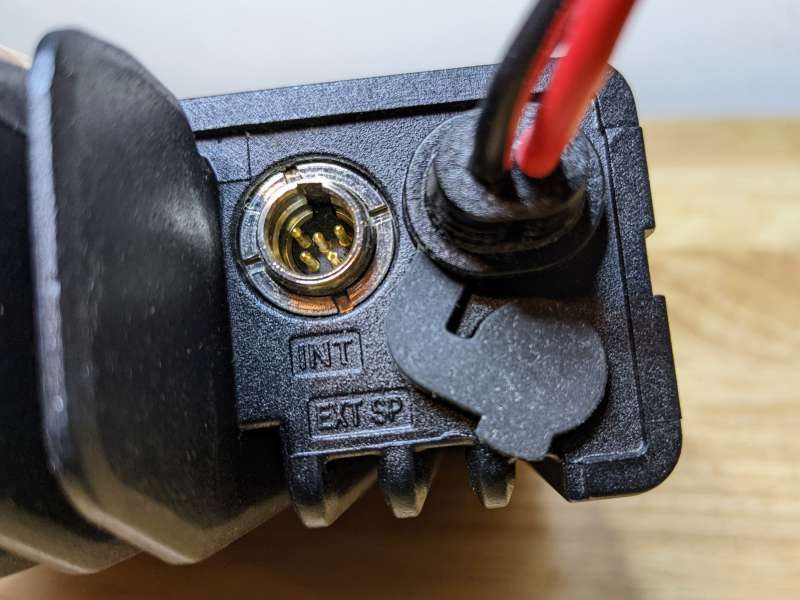
The underside of the MXT500 is all cooling fins.

The microphone included with the radio is of conventional design with a 4.5 ft. coiled cable.

The Push-To-Talk (PTT) button for transmitting is on the left of the mic.

On top there are buttons allowing the user to change channels directly from the handset.

The mic connects securely to the screw-on plug on the face of the MXT500.

The Midland MXT500 two-way radio comes with a small microphone holder that can be mounted with screws or with an adhesive tab.

The small antenna that ships with the MXT500 connects easily to the magnetic mount and cable.
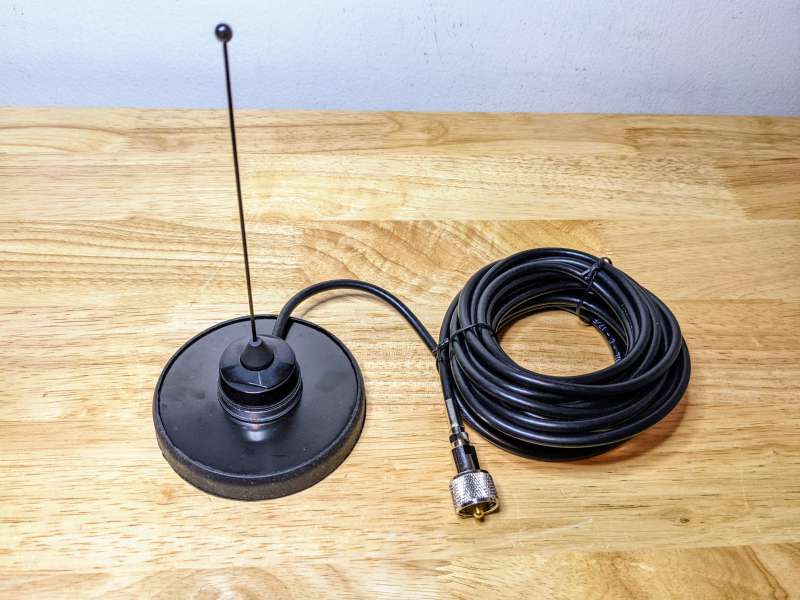
Midland also provides a small metal plate with adhesive on it for securing the antenna to vehicles with fiberglass roofs.

For mounting, the MXT500 comes with a versatile metal bracket and hardware.
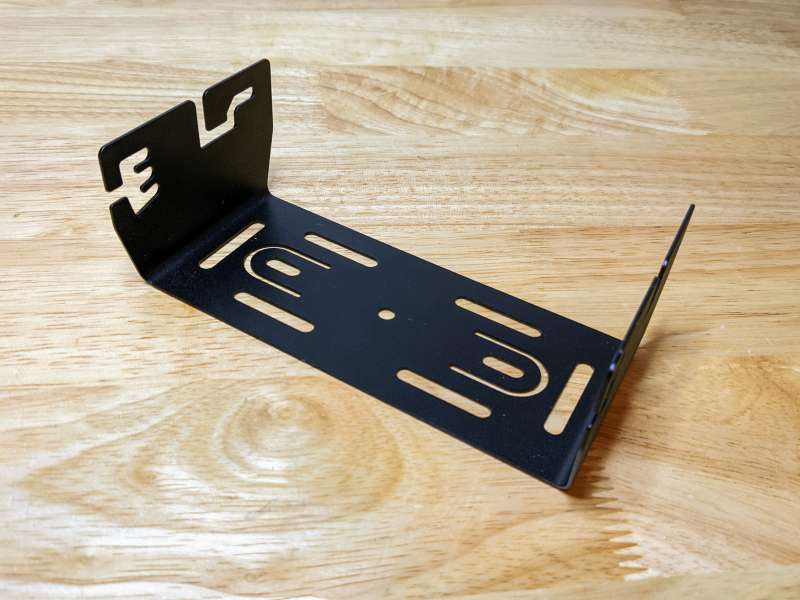
The bracket attaches with screws to the sides of the MXT500 and has three angled slots to choose from.

While not as feature packed as some other radios in its class the MXT500 does provide additional features like privacy codes. The MXT500 allows for the use of two different types of privacy codes, Continuous Tone Coded Squelch System (CTCSS) and Digitally Coded Squelch (DCS), which allow several users to share the same channel without disturbing each other. When CTCSS or DCS are enabled a channel is muted to all incoming signals unless they carry the correct tone. When used properly it allows users to only hear other people in their group using the same tone and nobody else. However, it doesn’t prevent other people from hearing the group’s transmissions.

The Midland MXT500 two-way radio also provides features like an automatic power off, three different transmit power levels, narrow and wide band modes, and a Silent Operation mode where all beeps and tones are disabled.

Setup
Since an FCC license is required to operate any GMRS system the first setup task for using the MXT500 is to register for one. An FCC GMRS license costs $35, lasts ten years, and covers any family member using the radio. Users can apply for a license online from the FCC website.
After getting a GMRS license the next setup step is making sure that the MXT500 has the proper power connections. Since I plan on using the MXT500 as a base station I opted to connect it to a power converter. Luckily, the Goal Zero Yeti 1000 Core Portable Power Station that I reviewed in September 2021 was perfect for this task. I connected the bare ends of the MXT500 power cord to an Anderson Powerpole to get the most power out of the Yeti 1000.

The MXT500 powered up as soon as I plugged it into the Yeti 1000 and worked fine. If I didn’t use the Yeti 1000, the MXT500 could be connected to a dedicated power converter as long as it meets the proper requirements.

With the Yeti 1000 powering the MXT500 I could start using it immediately but I added one more setup step to get the most out of the radio.
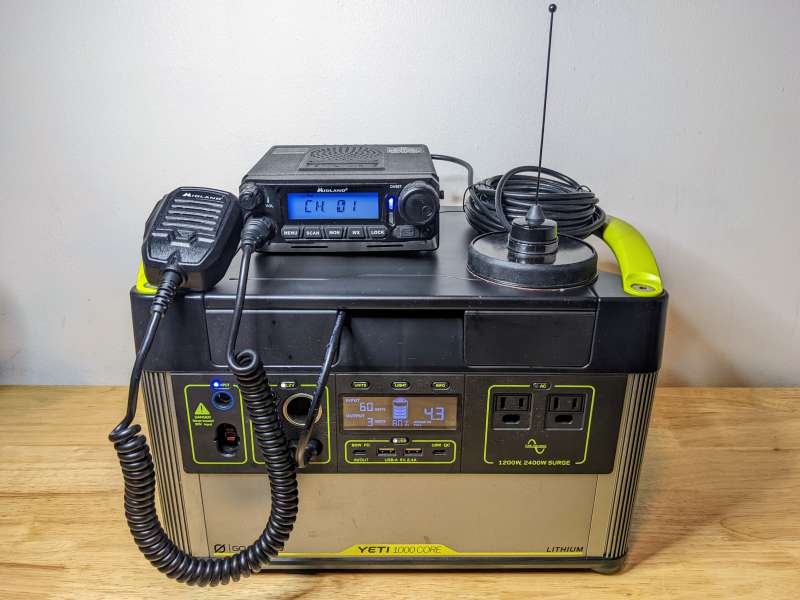
After downloading Midland’s free PC software I connected the radio to my laptop and followed the instructions for accessing the MXT500.

The MXT500 connects to a PC via a USB-C cable and the radio’s USB menu option needs to be turned on before the software is opened.

The software is really easy to use and once the PC recognized the Midland MXT500 two-way radio it allowed me to change a bunch of options like the starting display message, the channel display mode, and the default weather channel. I was also able to add repeater channels and other frequencies I wanted the MXT500 to monitor.

With my GMRS license, power requirements, and personalized options all taken care of I was now ready to start using my MXT500 as it was intended.

Performance
I really liked my portable setup and since I was using the Midland MXT500 two-way radio as a base station I needed to make sure it worked well with my mobile GMRS radios.

I broke out two of my Baofeng UV-5R radios, arguably the most popular and versatile portable GMRS handhelds on the market, and sent my two testers out into the field.

After making sure we were all on the same channel we were able to immediately communicate and at pretty impressive ranges, both obstructed and clear. The small included antenna works well, but would most likely need to be upgraded for better range.
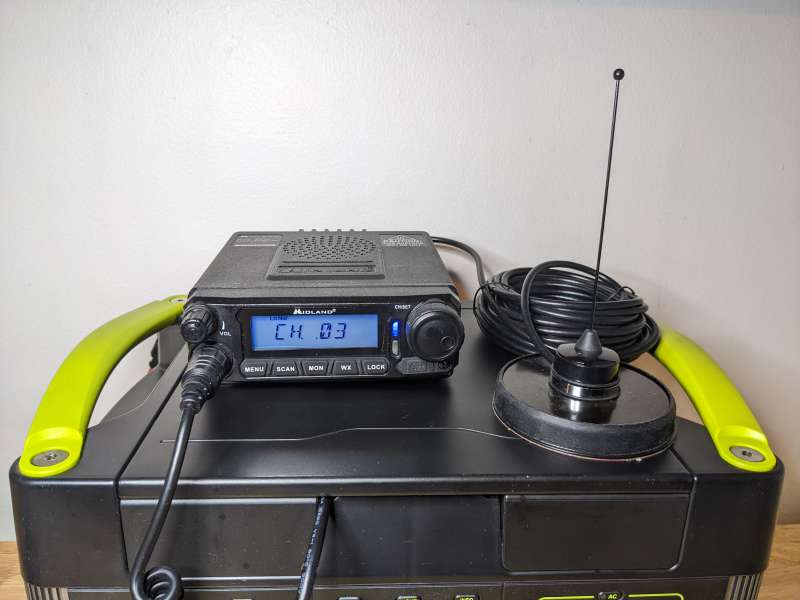
Since the MXT500 was connected to the Yeti 1000 I was able to see exactly how much power it was drawing during use. While in scanning mode the MXT500 only drew about 3 watts of power.

Once I began to transmit though the power usage jumped to around 27 watts. Because of the power draw I’m not sure how long the Yeti 1000 would be able to power the Midland MXT500 two-way radio without being connected to power itself, but it works well in its current configuration.

Since I’m relatively new to GMRS radios as powerful as the MXT500 this is the perfect radio for me. The MXT500 has just the right amount of features so as not to overwhelm a newbie like myself, yet it’s powerful enough to cover any scenarios I want to use it in. I may outgrow the MXT500 at some point but for now it works perfectly with my handhelds and power unit and is a lot of fun.
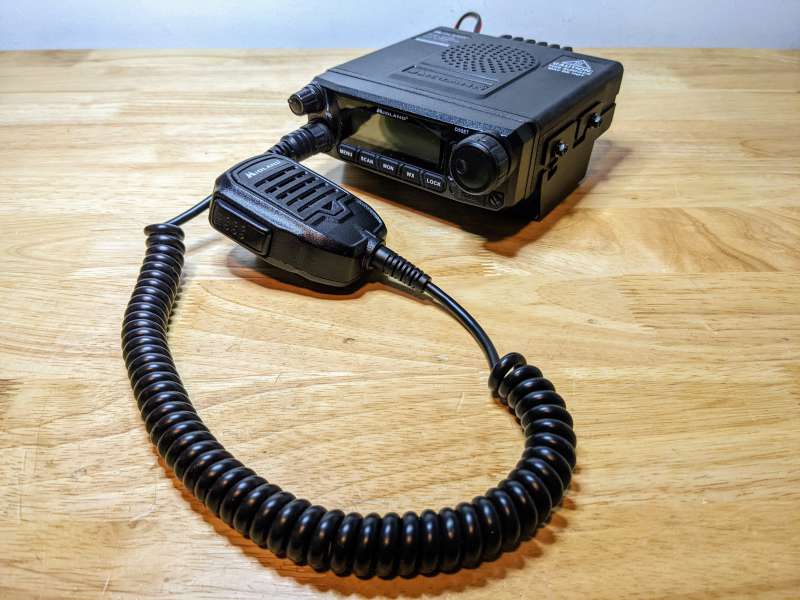
What I like
- Easy to set up and use
- Well-designed and great build quality
- Works well with handheld GMRS radios
What needs to be improved
- Cannot use cigarette lighter ports for auto or base station use, must be wired directly to a car battery or to a power converter
- Programming options not as versatile as similarly featured two-way radios
- Requires an FCC GMRS license to operate
- Expensive for the limited features
Final thoughts
The Midland MXT500 MicroMobile is an easy-to-use, powerful, expensive two-way radio. While it isn’t as versatile as other GMRS radios in its class it seems to have been designed purposefully simplistic. This is a great first-time GMRS radio for people willing to spend extra money for the Midland name who might be wary of other brands or intimidated by the complexity of HAM or CB radios. The Midland MXT500 two-way radio worked great out of the box with my handheld GMRS radios and even though it takes a bit more effort to set it up as a base station the added power is worth it. The MXT500 is pretty pricey at $399.99 so budget-minded radio enthusiasts might want to shop around.
Price: $399.99
Where to buy: Midland and Amazon
Source: The sample of this product was provided by Midland.

